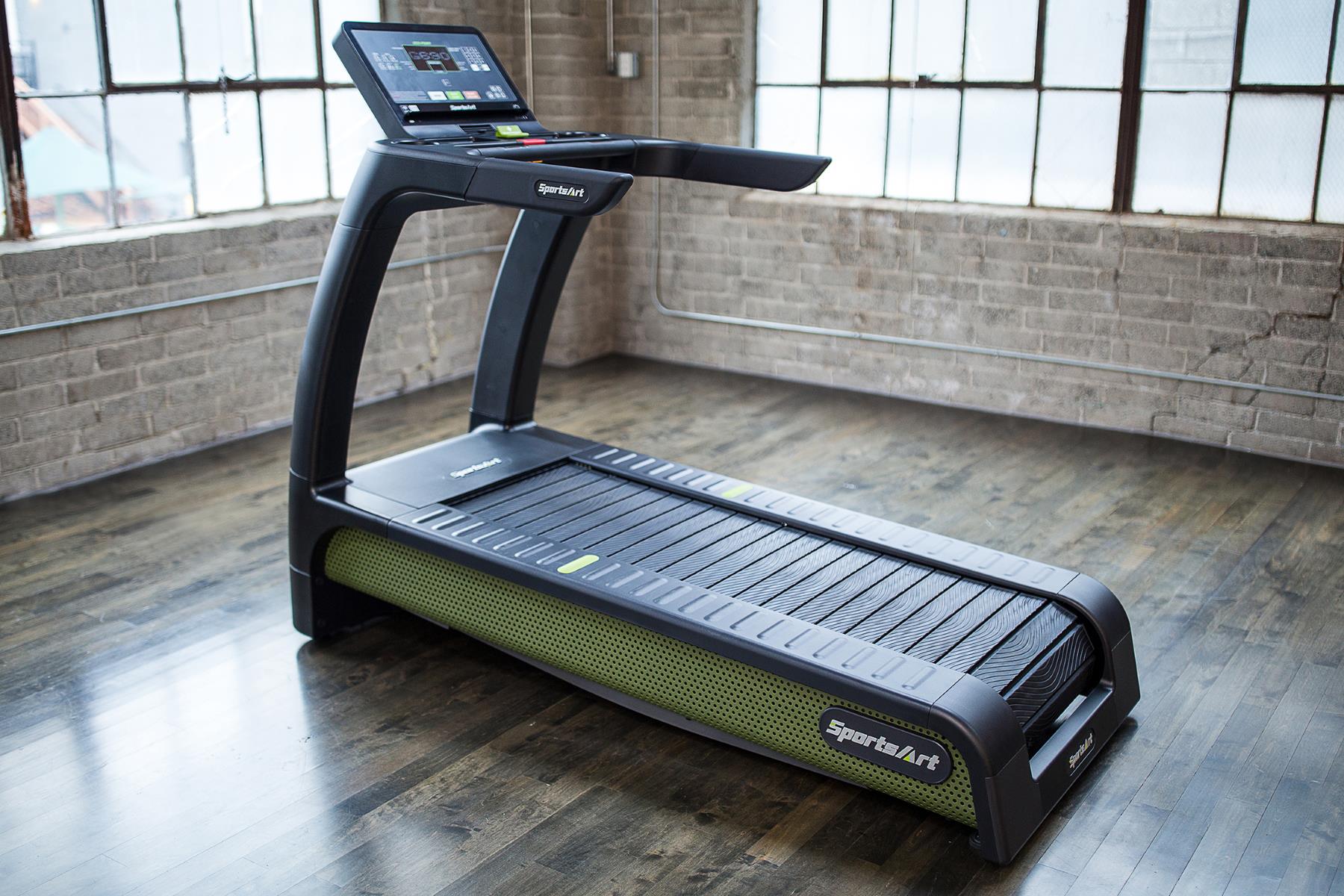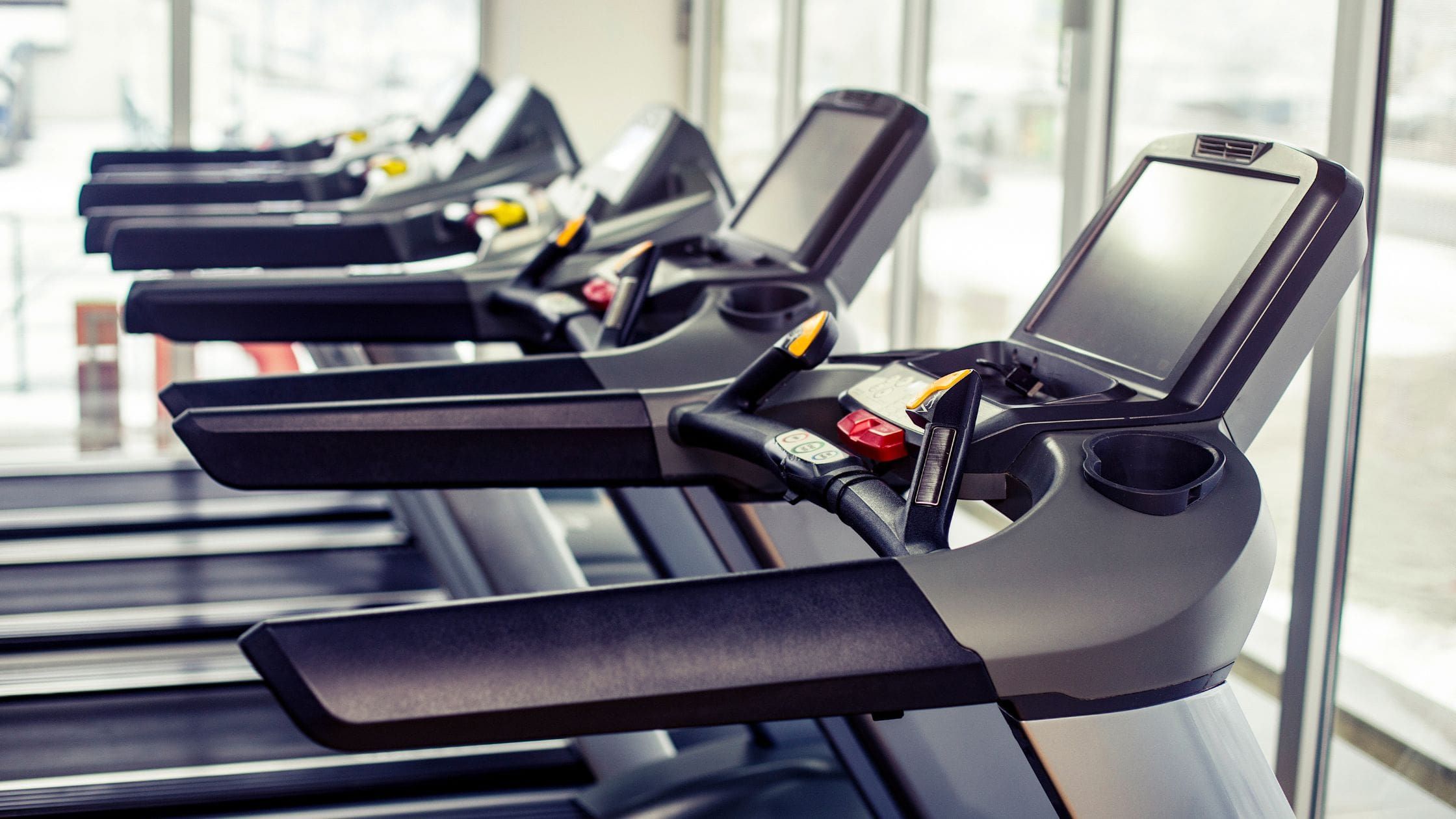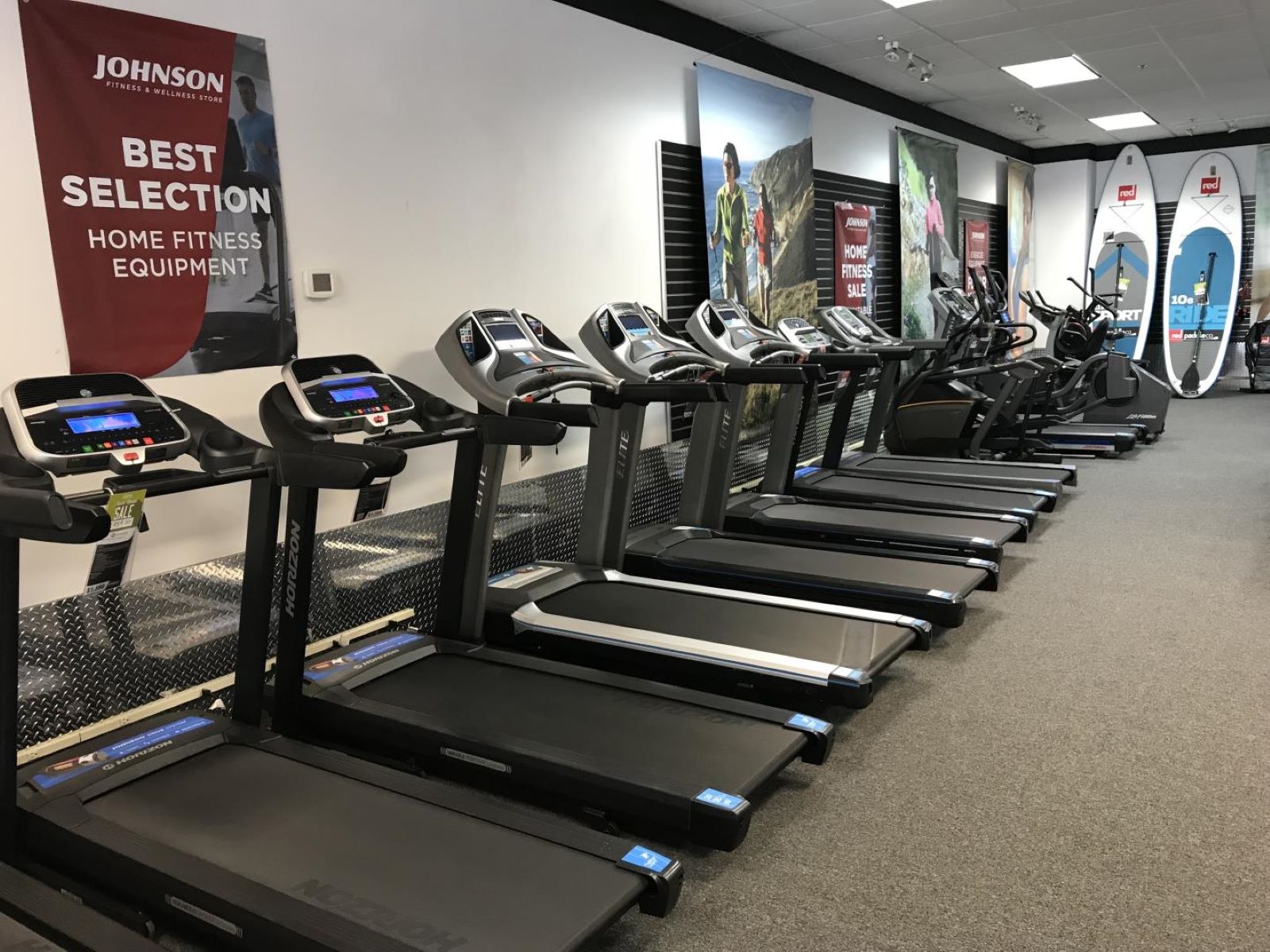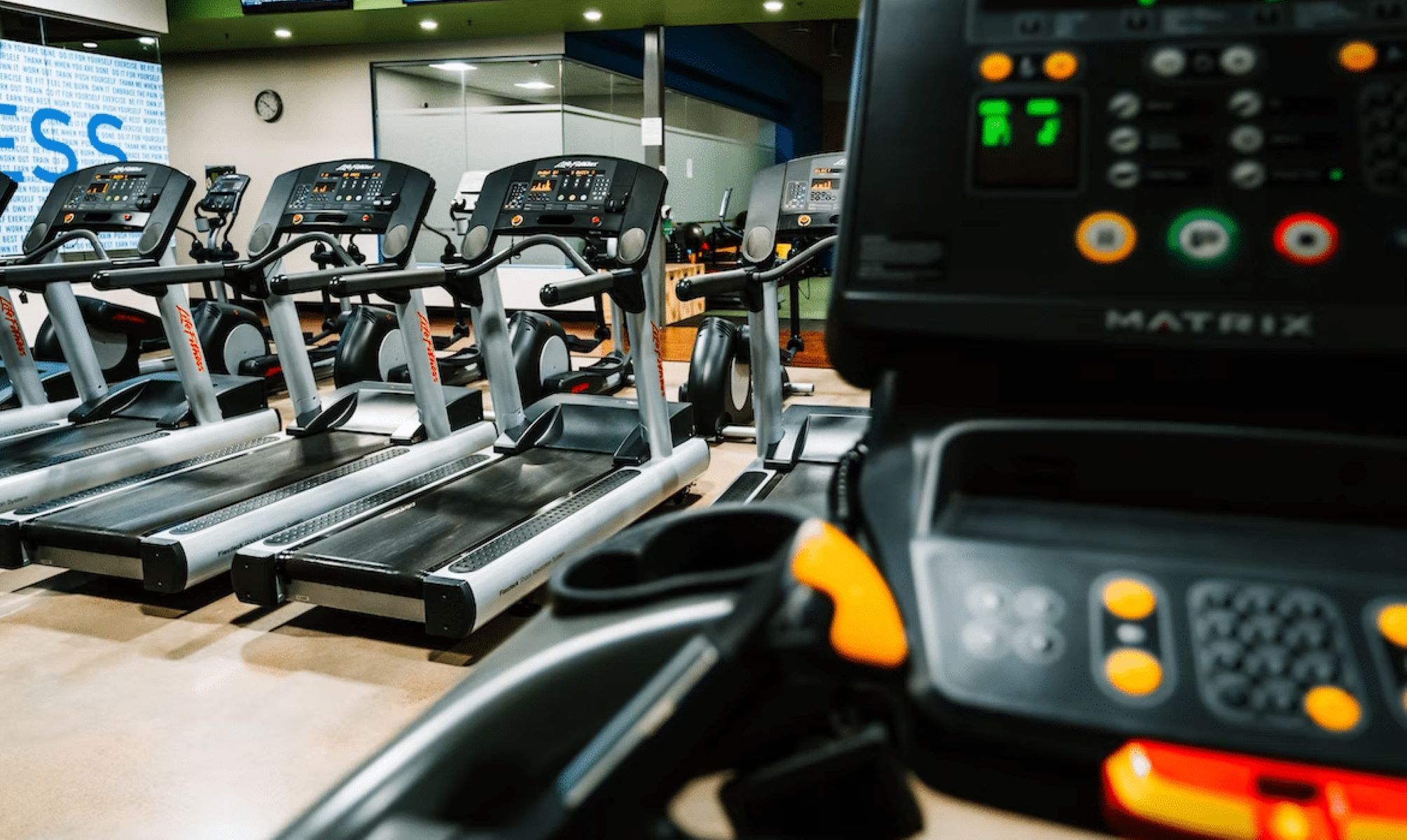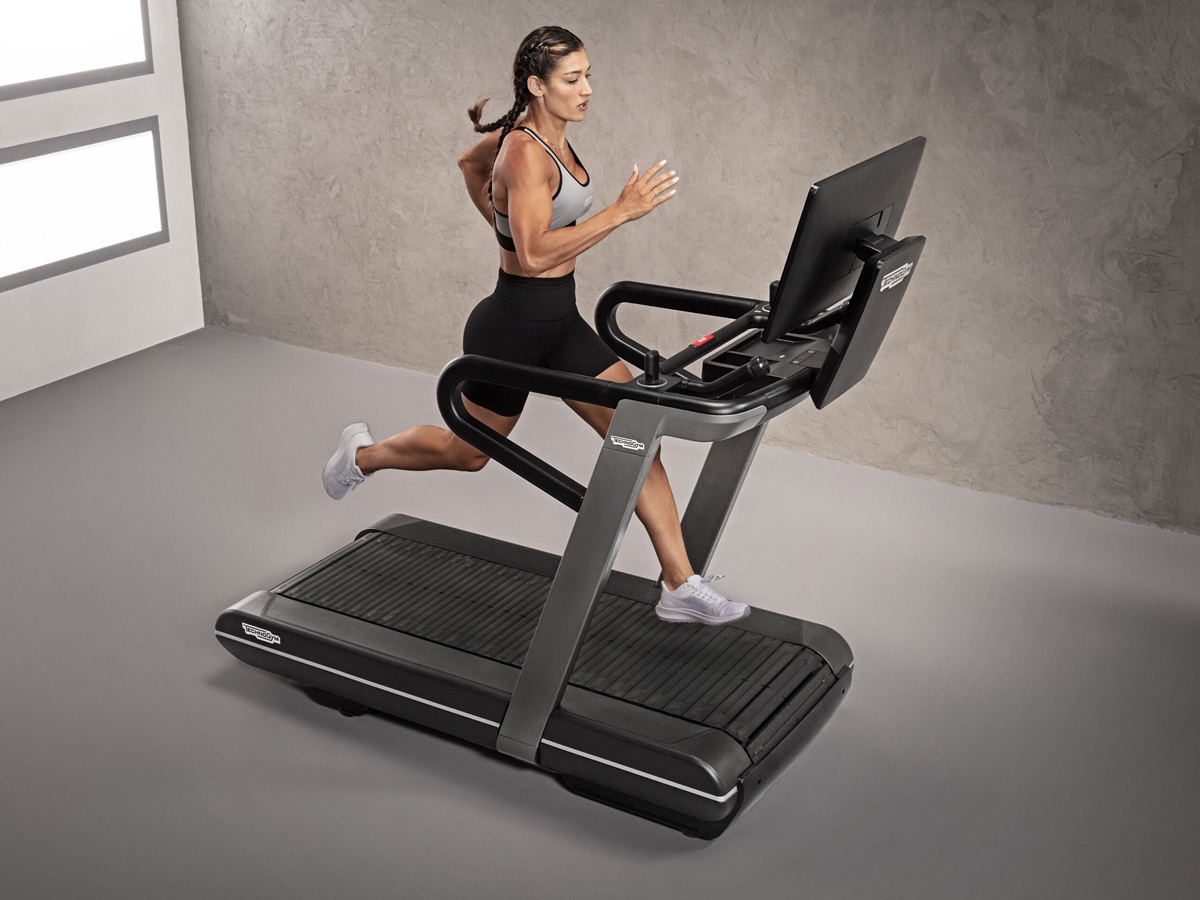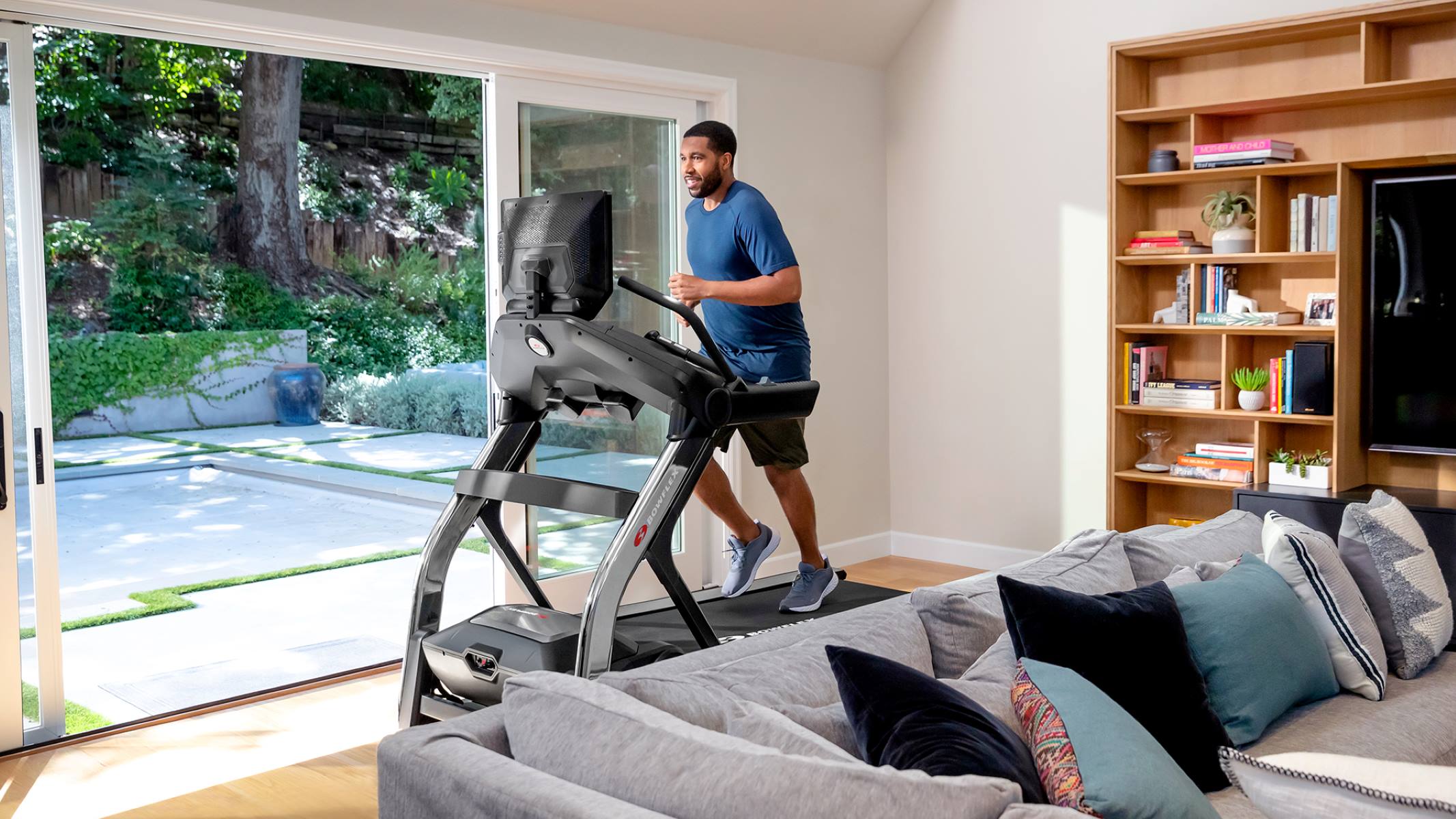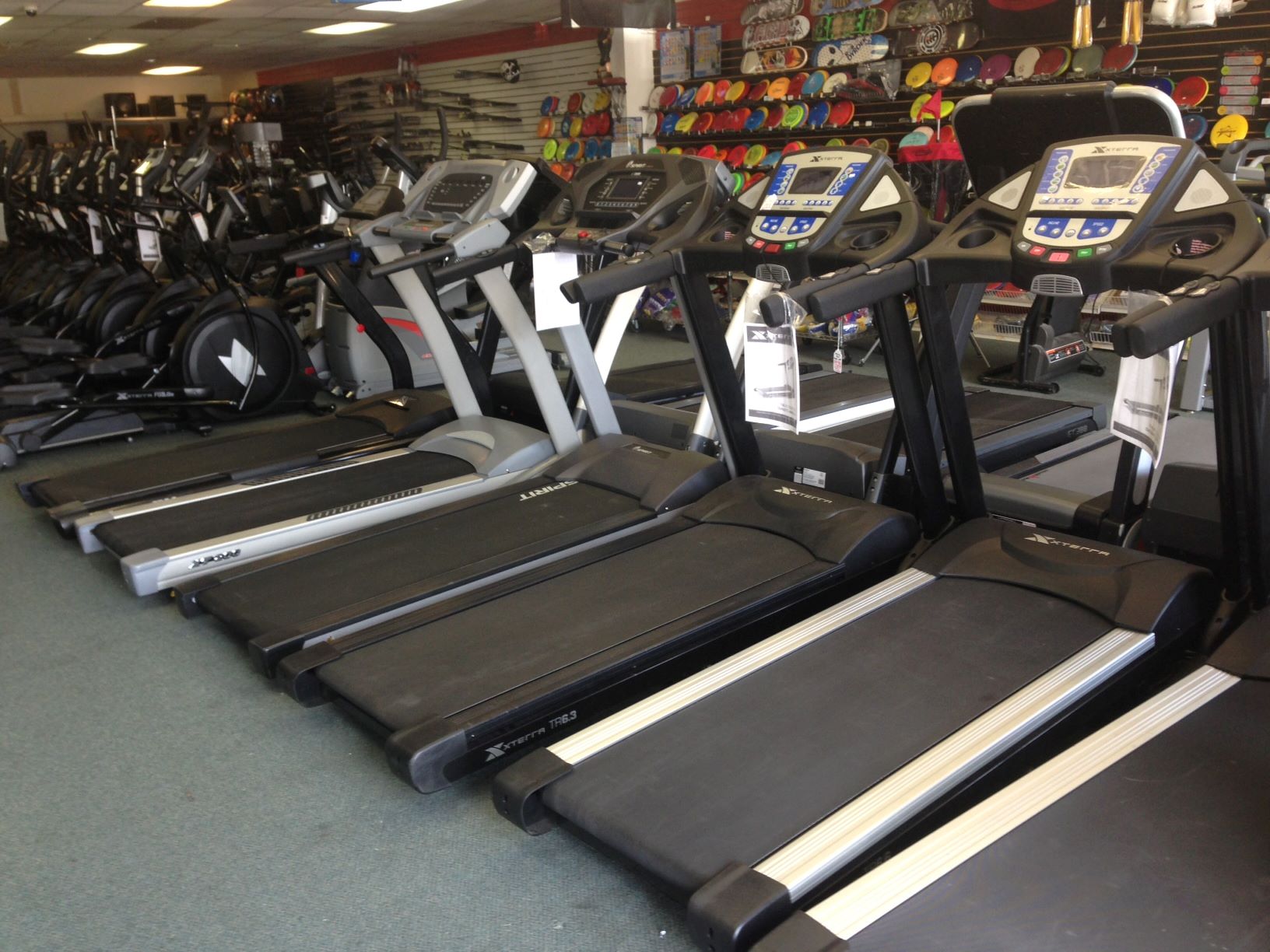Home>Misc>Featured>How Much Horsepower Should A Treadmill Have
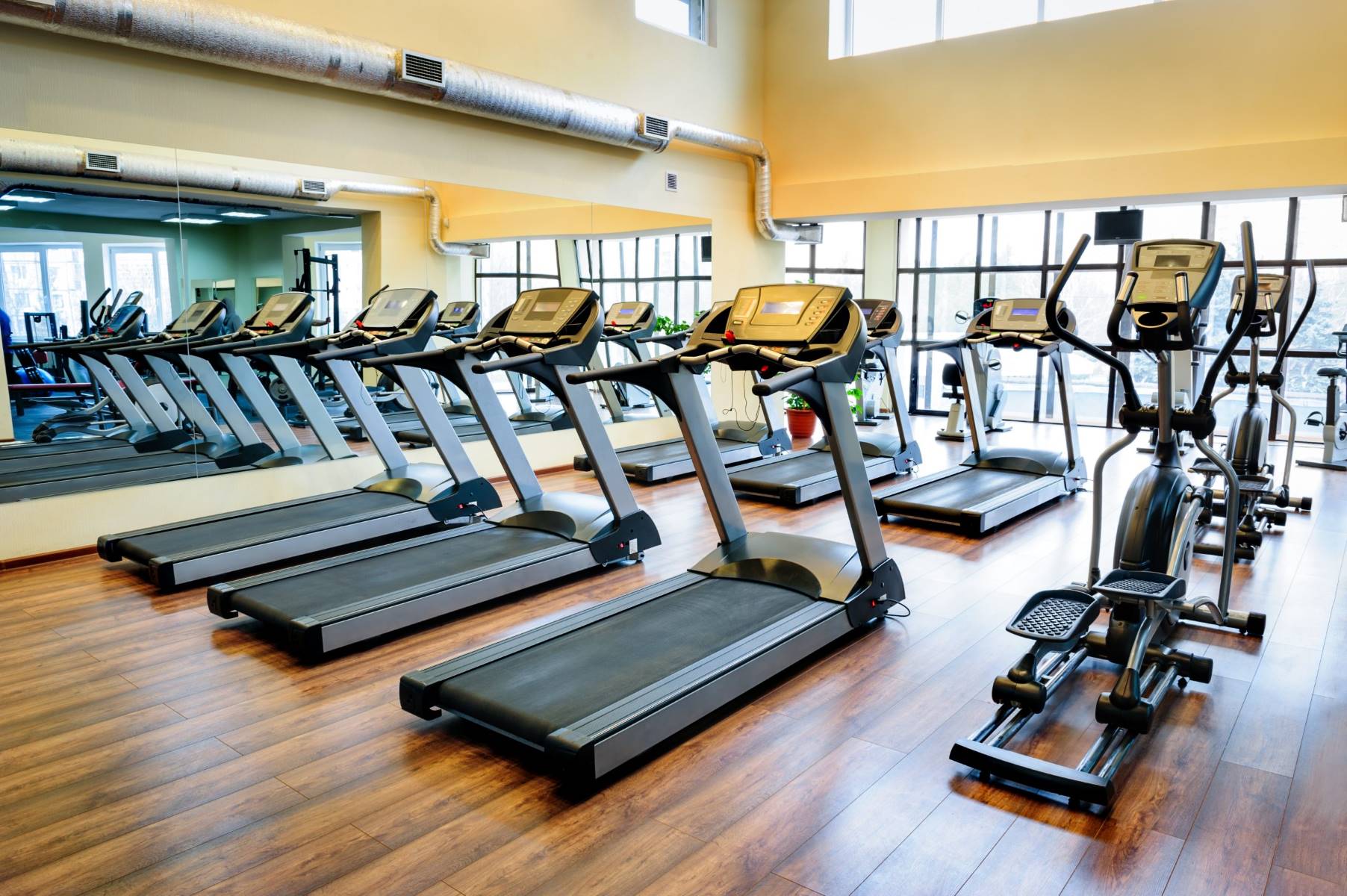

Featured
How Much Horsepower Should A Treadmill Have
Modified: August 19, 2023
Choose the perfect treadmill with the featured article on how much horsepower a treadmill should have for optimal performance.
Introduction
Treadmills have become a popular choice for individuals who want to stay fit and active in the comfort of their own homes. When purchasing a treadmill, one of the key considerations is the horsepower of the machine. But what exactly is horsepower, and why is it important when it comes to treadmills?
Horsepower is a unit of measurement that represents the power or work produced by an engine, in this case, the motor of a treadmill. It indicates the level of output and performance that the machine is capable of delivering. In simpler terms, horsepower measures how fast and efficiently the treadmill can operate.
The importance of horsepower in treadmills lies in its ability to provide a smooth and consistent running experience. A well-powered treadmill ensures that the belt moves effortlessly and can accommodate different running or walking speeds, inclines, and user weights. Without sufficient horsepower, the treadmill may struggle to maintain a steady pace, which can lead to an uncomfortable and unstable workout.
When determining the appropriate horsepower for a treadmill, several factors need to be taken into consideration. These factors include the user’s weight, desired running speed, and intended usage. It is crucial to select a treadmill with enough horsepower to meet these requirements, as insufficient power can result in excessive strain on the motor, reduced lifespan of the machine, and compromised performance.
In the following sections, we will dive deeper into the factors to consider when determining the horsepower for a treadmill and provide a recommended horsepower range for different users. We will also explore the difference between continuous and peak horsepower and discuss additional features that can enhance your treadmill experience.
What is horsepower?
Horsepower is a unit of measurement that originated from the industrial era when steam engines were commonly used. It was devised by engineer James Watt to help people understand and compare the power output of steam engines to the power of horses. One horsepower is equivalent to the power needed to lift 550 pounds one foot in one second.
In the context of treadmills, horsepower refers to the motor’s ability to generate and sustain power to move the running belt. It determines the speed and performance capabilities of the treadmill. The higher the horsepower, the more capable the treadmill is of accommodating different user weights and running speeds.
There are two main types of horsepower to consider when evaluating treadmills: continuous horsepower (CHP) and peak horsepower (PHP). Continuous horsepower refers to the power output that can be maintained continuously without overheating the motor. Peak horsepower, on the other hand, refers to the maximum power output that the treadmill can reach for a short period of time.
It’s important to note that the horsepower of a treadmill is not the sole indicator of its performance. Other components, such as the motor’s quality, build, and efficiency, also play a crucial role. A high-quality motor combined with the appropriate horsepower ensures a smooth, reliable, and efficient treadmill experience.
When shopping for a treadmill, it’s recommended to opt for a motor with a higher continuous horsepower rating. This ensures that the treadmill can handle various workout intensities, provide a stable running surface, and handle the demands of different users. However, it’s also worth considering your specific needs and usage patterns to determine the appropriate horsepower for your treadmill.
Importance of horsepower in treadmills
When it comes to treadmills, horsepower plays a vital role in determining the overall performance and functionality of the machine. The right amount of horsepower ensures that the treadmill can provide a smooth and consistent workout experience. Here are some key reasons why horsepower is important in treadmills:
1. Smooth and consistent operation:
A treadmill with sufficient horsepower ensures that the running belt moves smoothly and consistently, without any lags or sudden changes in speed. This eliminates the risk of jarring movements and provides a safer and more comfortable workout environment.
2. Accommodate different user weights:
Horsepower is crucial in determining the weight capacity of a treadmill. A higher horsepower rating allows the treadmill to handle heavier users without straining the motor. It ensures that the treadmill can maintain a steady pace and provide adequate support while running or walking.
3. Handle varying running speeds:
Horsepower determines the maximum speed at which a treadmill can operate. If you are a seasoned runner or prefer faster-paced workouts, a treadmill with higher horsepower is necessary. It allows you to adjust the speed to your desired intensity without putting excessive strain on the motor.
4. Accommodate incline settings:
Many treadmills offer incline settings to simulate uphill or downhill running. The horsepower of the motor determines how smoothly and efficiently the treadmill can adjust and maintain different incline levels. Sufficient horsepower ensures that the treadmill can handle incline changes without compromising performance.
5. Prolonged lifespan:
A treadmill with inadequate horsepower may struggle to keep up with the demands of regular use, leading to motor overheating and premature wear and tear. By selecting a treadmill with the appropriate horsepower for your needs, the motor is less likely to be overworked, resulting in a longer lifespan for the machine.
6. Enhanced overall performance:
The right amount of horsepower not only ensures smooth operation but also contributes to the overall performance of the treadmill. It allows for advanced features such as pre-set workout programs, personalized training options, and interactive capabilities.
Considering these factors, it is evident that horsepower plays a critical role in the functionality and user experience of treadmills. It is essential to choose a treadmill with adequate horsepower to meet your specific needs and provide a reliable and enjoyable workout session.
Factors to consider when determining horsepower for a treadmill
Choosing the right amount of horsepower for a treadmill is crucial to ensure optimal performance and longevity of the machine. There are several important factors to consider when determining the horsepower needed for your treadmill:
1. User weight:
The weight of the user is an essential factor to consider when determining the horsepower of a treadmill. Heavier users put more strain on the motor, requiring a higher horsepower rating to maintain a consistent and smooth running experience.
2. Intended usage:
Consider how often and for what purposes the treadmill will be used. If you plan to use the treadmill for intense running or rigorous workouts, a higher horsepower is recommended. On the other hand, if the treadmill will primarily be used for light walking or occasional jogging, a lower horsepower may be sufficient.
3. Running speeds:
Take into account the desired running speeds. If you are an experienced runner or plan to perform high-intensity sprints on the treadmill, a higher horsepower is necessary to accommodate faster speeds without straining the motor.
4. Incline settings:
If you intend to use the incline feature on your treadmill, consider the range and frequency of incline adjustments. More powerful motors are better equipped to handle frequent incline changes, ensuring a seamless transition and minimizing strain on the motor.
5. Durability and longevity:
Investing in a treadmill with sufficient horsepower ensures that the motor is not overworked, leading to a longer lifespan for the machine. A treadmill with a lower horsepower rating may have a shorter lifespan and may require more frequent repairs or replacements.
6. Budget constraints:
While it is important to select a treadmill with adequate horsepower, it is also necessary to consider your budget. Higher horsepower models usually come at a higher price point. Assess your needs and find a balance between horsepower and budget to make an informed decision.
By considering these factors, you can determine the appropriate horsepower for your treadmill, ensuring a smooth and enjoyable workout experience that meets your specific requirements.
Recommended horsepower range for different users
When it comes to choosing the right horsepower for a treadmill, it is important to consider the specific needs and characteristics of different users. Here is a recommended horsepower range based on user profiles:
1. Light users:
If you are a light user who primarily engages in walking or light jogging, a treadmill with a horsepower range of 1.5 to 2.0 CHP (continuous horsepower) is typically sufficient. This range can comfortably accommodate users with weights up to 200 pounds and provide a smooth and consistent workout experience.
2. Average users:
For individuals who engage in moderate-intensity workouts, such as jogging or running, a treadmill with a horsepower range of 2.0 to 3.0 CHP is recommended. This range can support users with weights up to 250 pounds and handle varying running speeds and incline adjustments.
3. Heavy users:
If you are a heavier user or plan to engage in intense running or heavy training sessions, a treadmill with a horsepower range of 3.0 to 4.0 CHP or higher is recommended. This range is suitable for users with weights exceeding 250 pounds and ensures that the motor can handle higher speeds, incline adjustments, and withstand prolonged usage.
4. Commercial or professional use:
For commercial settings such as gyms or fitness centers, or for professional athletes, a treadmill with a horsepower range of 4.0 CHP or higher is ideal. These high-performance machines are designed to handle extensive usage, heavy loads, and intense workouts.
Keep in mind that these ranges are general recommendations and can vary depending on the specific brand and model of the treadmill. It’s important to review the manufacturer’s specifications and guidelines to ensure that the treadmill can adequately meet your requirements.
By selecting a treadmill with the appropriate horsepower range for your specific needs, you can ensure a reliable and enjoyable workout experience that caters to your fitness goals.
Understanding continuous vs. peak horsepower
When researching and comparing treadmills, you may come across two terms related to horsepower: continuous horsepower (CHP) and peak horsepower (PHP). It is important to understand the difference between these two measurements to make an informed decision about the power of your treadmill.
Continuous Horsepower (CHP):
Continuous horsepower refers to the amount of power that the motor can sustainably deliver without overheating or faltering. It represents the motor’s steady-state power output during regular use. When a treadmill is rated with a certain CHP, it means that the motor can consistently produce that level of power without issue. CHP is a more relevant and accurate measure of a treadmill’s performance as it accounts for sustained operation over an extended period of time.
Peak Horsepower (PHP):
Peak horsepower, also known as maximum or surge horsepower, refers to the maximum power output that a treadmill’s motor can achieve for short bursts. It represents the motor’s maximum power potential when pushed to its limits. While peak horsepower can indicate the motor’s capability to handle brief periods of high intensity, it is less reflective of the motor’s sustained performance during regular use.
It’s important to note that CHP is the more reliable measurement when evaluating a treadmill’s performance. Treadmills with higher CHP ratings generally provide smoother and more consistent operation, especially when dealing with changes in speed or incline. Lower CHP ratings may result in the motor straining and potentially overheating if pushed too hard, compromising the overall performance and durability of the treadmill.
Peak horsepower, on the other hand, is less indicative of a treadmill’s day-to-day performance. It may be useful in situations where quick bursts of maximum power are required, such as sprinting or interval training. However, it is not a true reflection of the treadmill’s sustained power output during regular workouts.
When comparing treadmills, it is recommended to prioritize the continuous horsepower rating rather than the peak horsepower. A higher CHP rating ensures that the treadmill can handle a variety of workout intensities, user weights, and incline settings without straining the motor or compromising performance.
Understanding the difference between CHP and PHP allows you to make a more informed decision when selecting a treadmill that meets your specific needs and provides a reliable and enjoyable workout experience.
Additional features to consider in a treadmill
When selecting a treadmill, horsepower is a crucial factor to consider, but it’s also important to consider additional features that can enhance your overall workout experience. Here are some key features to consider:
1. Running surface:
The size and cushioning of the running surface can greatly impact your comfort and joint health. Look for treadmills with a spacious and well-cushioned deck that provides ample room for your stride and absorbs shock to reduce the impact on your joints.
2. Incline and decline capabilities:
Many treadmills offer incline and decline settings to simulate uphill or downhill running. This feature can add variety and intensity to your workouts, allowing you to target different muscle groups and increase calorie burn. Consider the range and adjustability of the incline and decline features when choosing a treadmill.
3. Pre-set workout programs:
Pre-set workout programs can help add variety and challenge to your workouts. Look for treadmills that offer a variety of programs tailored to different goals, such as fat burning, interval training, or endurance workouts. These programs can help you stay motivated and achieve your fitness goals.
4. Heart rate monitoring:
Heart rate monitoring is an invaluable tool for tracking your workout intensity and ensuring that you stay within your target heart rate zone. Look for treadmills equipped with built-in heart rate monitoring features, such as pulse sensors or wireless chest straps, to help you optimize your workouts and monitor your progress.
5. Entertainment and connectivity:
Some treadmills offer entertainment features, such as built-in speakers or compatibility with devices like smartphones or tablets. These features allow you to listen to music, watch videos, or connect to fitness apps while working out, making your sessions more enjoyable and engaging.
6. Space-saving design:
If you have limited space in your home, consider treadmills with a foldable or compact design. These treadmills can be easily folded and stored when not in use, saving you valuable space in your living area.
7. Warranty and customer support:
When investing in a treadmill, it’s important to consider the warranty and customer support offered by the manufacturer. Look for treadmills with a generous warranty that covers the motor, frame, and other components. Customer support is also important in case of any troubleshooting or assistance required during the lifespan of the treadmill.
By considering these additional features, you can find a treadmill that not only meets your horsepower requirements but also enhances your workout experience, motivation, and convenience.
Conclusion
Choosing the right horsepower for a treadmill is essential for a smooth, enjoyable, and effective workout experience. It ensures that the treadmill can handle different user weights, running speeds, and incline settings without straining the motor or compromising performance. When determining the horsepower for your treadmill, consider factors such as user weight, intended usage, running speeds, and durability.
Understanding the difference between continuous horsepower (CHP) and peak horsepower (PHP) is important to make an informed decision. CHP represents the sustained power output of the motor during regular use, while PHP indicates the motor’s maximum power potential for short bursts. Prioritize the CHP rating, as it is a more accurate measure of the treadmill’s performance and capability to handle various workout intensities.
In addition to horsepower, consider additional features such as the running surface, incline capabilities, pre-set workout programs, heart rate monitoring, entertainment options, and warranty. These features can enhance your overall workout experience, provide variety, and increase motivation.
Remember to strike a balance between your specific needs, budget constraints, and the features provided by different treadmills. By doing so, you can select a treadmill that meets your requirements, supports your fitness goals, and ensures a reliable, comfortable, and engaging workout session.
Take the time to research and compare different treadmill models, read reviews, and consult with professionals or fitness experts to make an informed decision. With the right horsepower and additional features, your treadmill can become a valuable tool in achieving and maintaining your fitness journey.
